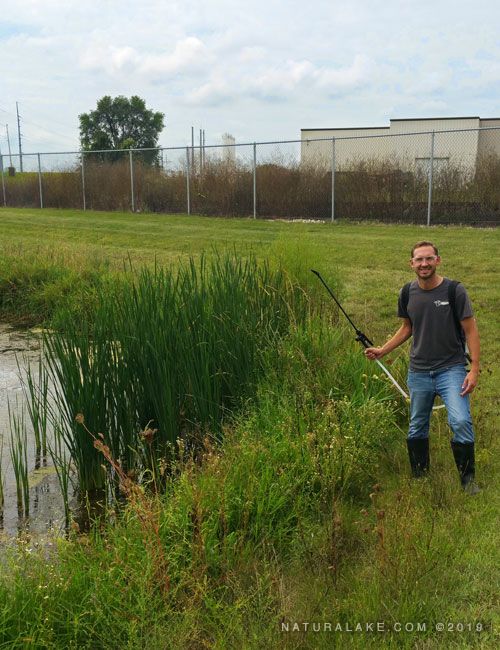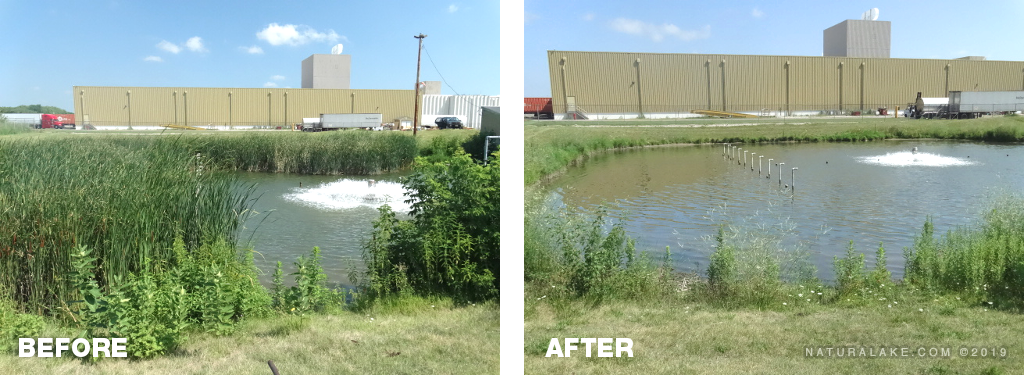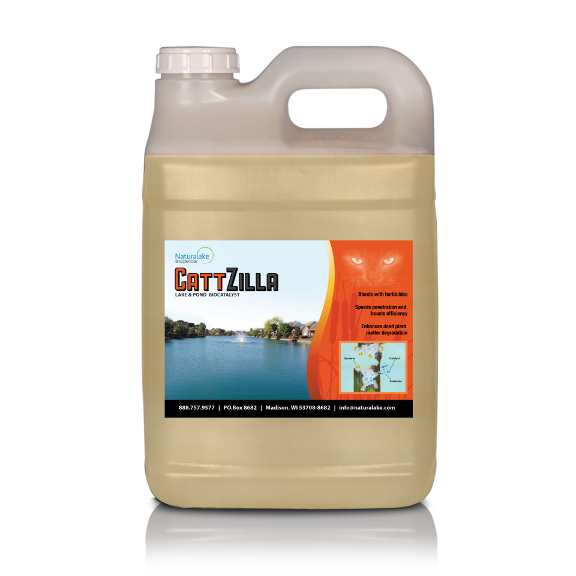 Cattails are a conundrum for many managed water resources. These unique plants can be seen growing in just about every type of water body and are easily identifiable by their flowering spike. They typically grow between 3 and 10 feet tall in dense colonies with a vast underground root system.
Cattails are a conundrum for many managed water resources. These unique plants can be seen growing in just about every type of water body and are easily identifiable by their flowering spike. They typically grow between 3 and 10 feet tall in dense colonies with a vast underground root system.
On the plus side, they can provide food, shelter, or supplies to many members of an aquatic ecosystem, including ducks and insects. Hunters use cattails as natural cover and many cultures have incorporated the plants into their diet. They can also be vital to stopping shoreline erosion and are excellent at soaking up excess nitrogen and phosphorus.
On the downside, cattails can spread rapidly and create monocultures that choke out other native plants that are important in an aquatic ecosystem. Dense and expansive colonies can cover an entire water body and limit its usefulness for any recreational activities or flood and drainage control. Even small stands can destroy a view or create access difficulties in ponds, lakes, irrigation canals, and streams.
Controlling cattails can often be very difficult and control may take multiple attempts or treatments. Both physical and chemical control methods can be used to successfully treat cattails.
Physically controlling cattails involve hand-pulling, mowing and cutting, and dredging. When done correctly, these methods are effective and will often provide long term results. However, they are usually labor intensive, expensive, and can be very disruptive to an aquatic ecosystem.

Treating the cattails with herbicides such as glyphosate, imazapyr, or imazamox are quick remedies that will kill problematic cattails. These systemic herbicides work by being absorbed by the plant and moving within it. Several treatments are often needed for the herbicides to work due to coverage difficulties and lack of absorption by the plants. In addition, dead cattail stands are slow to decay and can stay upright for years following an herbicide treatment.
 Fortunately, Naturalake Biosciences has revolutionized cattail treatments with the development of CattZilla. This all-natural biocatalyst speeds up reactions and the degradation of dead cattails down to the root system when applied with an herbicide. CattZilla does not kill anything. It increases herbicide penetration and breaks down the mechanical tissue of the dead shoots and stalks to ensure the stands thin out, crumble, and dissolve. Using CattZilla with glyphosate, imazapyr, or imazamox enhances treatment consistency and reduces the need to retreat.
Fortunately, Naturalake Biosciences has revolutionized cattail treatments with the development of CattZilla. This all-natural biocatalyst speeds up reactions and the degradation of dead cattails down to the root system when applied with an herbicide. CattZilla does not kill anything. It increases herbicide penetration and breaks down the mechanical tissue of the dead shoots and stalks to ensure the stands thin out, crumble, and dissolve. Using CattZilla with glyphosate, imazapyr, or imazamox enhances treatment consistency and reduces the need to retreat.
